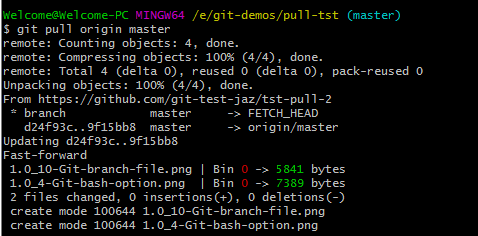

- #Make command prompt pull from sequel pro pro
- #Make command prompt pull from sequel pro password
- #Make command prompt pull from sequel pro windows
To list database type the following command mysql> show databases
#Make command prompt pull from sequel pro password
You may need to provide mysql username, password and hostname, use: $ mysql -user=your-user-name -password=your-password
:max_bytes(150000):strip_icc()/command-prompt-drag-and-drop-581132655f9b58564ca953c2.png)
Invoke it from the prompt of your command interpreter as follows: $ mysql Then you can write in the Terminal: this approach also works for a set of connection windows/tabs since one can save all as Session (foo. First, we create a table named vendors for the. Simply open your connection, select a db and table and save it as foo.spf file via S (Save Connection). mysql is command line and it is very easy to use. Lets take a look some examples of adding a new column to an existing table. To list all the databases execute this command in terminal: mysql -u root -p -e 'show databases' It will silently create a database mydb without giving any message/output. To create database mydb execute following command in terminal: mysql -u root -p -e 'create database mydb' If you want to select all the information from person and want to save in a file: mysql -u root -p -e 'Select * from person' mydb > personinfoĪnd of-course you can create a database using terminal itself If you want to insert values in person: mysql -u root -p -e 'Insert into person(PersonID,LastName,FirstName) Values(100,"Kumar","Saurav")' mydb Similary you can execute any query you want. Execute the following command: SQLCMD -S. Where root is the username, mydb is the name of the database. Open an RDP session to your MS SQL server where the SolarWinds Orion database is stored. If you want to create a table person then: mysql -u root -p -e 'Create table person(PersonID int, LastName varchar(255), FirstName varchar(255))' mydb

#Make command prompt pull from sequel pro windows
Syntax: mysql -u user_name -p password -e 'SQL Query' databaseĬlearificance: -u : Specify mysql database user name Note: To check out the IP address of the host PC, you can press Windows + R, input cmd top open Command Prompt. I label it sanitized as well!ĭoing this manually should only be viewed as a temporary solution.Here is the syntax to execute sql statement from terminal I often will then export this database and keep it as a point of reference, just in case I need to start over or share it with my development team. We have put together some easy to use notes for using MySQL with Sequel Pro. It gives you direct access to MySQL databases on remote or local servers.
#Make command prompt pull from sequel pro pro
This is easily accomplished by running drush cr (once you confirm you can bootstrap) and then drush sql-sanitize. Sequel Pro is an opensource, native application for Mac. So you will have to run lando info any time you want to connect (otherwise, the will almost certainly fail after the first time you get it working)Īny time you pull a database down manually, don’t forget to sanitize it.

From there you can easily import a database, or manipulate an existing one! Gotchas / RecommendationsĮvery time you restart / rebuild your vm, the port is going to change. In this case, I’m using the drupal9 recipe so all three are drupal9 (but your miles will vary based on which recipe you use). The username, password, and database all come from the Lando recipe that you are using. The host and port come from that external connection data. Once you have the telltale green output we need to run an additional Lando command to get more database info: $ lando info [ The basic prerequisites for this tutorial are quite simple:įrom here, start up lando with lando start.


 0 kommentar(er)
0 kommentar(er)
